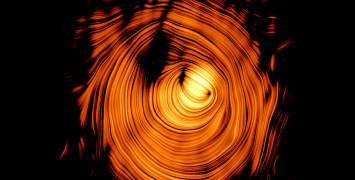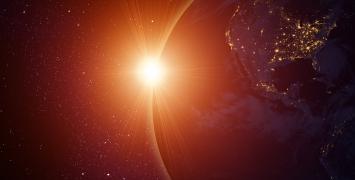Three habitable Earth-like planets observed by ERC grantee
A team of researchers, led by ERC grantee Michaël Gillon, has discovered three potentially habitable planets that orbit an ultra-cool dwarf star, no further away than 40 light years from Earth.

Over the last 20 years, astronomers have been detecting planets outside our solar system, the so-called exoplanets. They also developed techniques to study their atmospheres, in an effort to find, one day, extra-terrestrial life. A successful method to locate exoplanetary systems relies on monitoring the brightness of the stars over long time spans. Regular dimmings of the signal suggest that one or more objects – possibly planets – are passing in front of the star.
Most research so far has focused on bright, Sun-like stars. While these can be seen with optical telescopes, their light can overpower any signal coming from the planets. So, Dr Michaël Gillon, with his team at the University of Liège, turned to the so-called "ultracool dwarfs" - faint, tiny red stars, emitting mostly infrared radiation. To observe them they used TRAPPIST, or TRAnsiting Planets and PlanetesImals Small Telescope, a tailored-made telescope with a primary mirror of 60 cm in diameter based in Chile. Their EU-funded project is called SPECULOOS - Search for habitable Planets EClipsing ULtra- cOOl Stars.
In September 2015, the team focused the telescope on 2MASS J23062928-0502285, now known as TRAPPIST-1, a Jupiter-sized ultra-cool dwarf star, located 40 light years from Earth, whose size and temperature are significantly lower than our sun. And they observed exactly what they were hoping to see: regular dimmings of the star's infrared signal, confirming the existence of three planets, with similar sizes to Earth and Venus.
"Before detecting these planets we did not even know that potentially habitable Earth-sized planets orbit also around ultracool dwarf stars. This discovery increases drastically our chances to find life elsewhere in the Galaxy in the near future!" said Dr Gillon.
All the three planets have permanent day and night sides. The two of them closest to the star may be too hot on their day side and too cold on their night side to host any life forms, although the terminator, the twilight zone that separates the illuminated from the dark side on both planets , might have a temperature range that is suitable for sustaining liquid water and life. It is the third planet, the furthest from the star, which may be entirely habitable.
Given the Jupiter-size of the host star and the proximity of the system, it will soon be possible to study the three planets' atmospheric composition, to assess their habitability and to determine whether they host any form of life.
"Besides, thanks to the [research] strategy we used for this project, our ERC-funded project SPECULOOS should enable us to detect many more other similar planets," said Dr Gillon.
Dr Gillon was awarded an ERC Starting Grant in 2013 for the SPECULOOS project. Their recent study was published in Nature on 2 May 2016.






